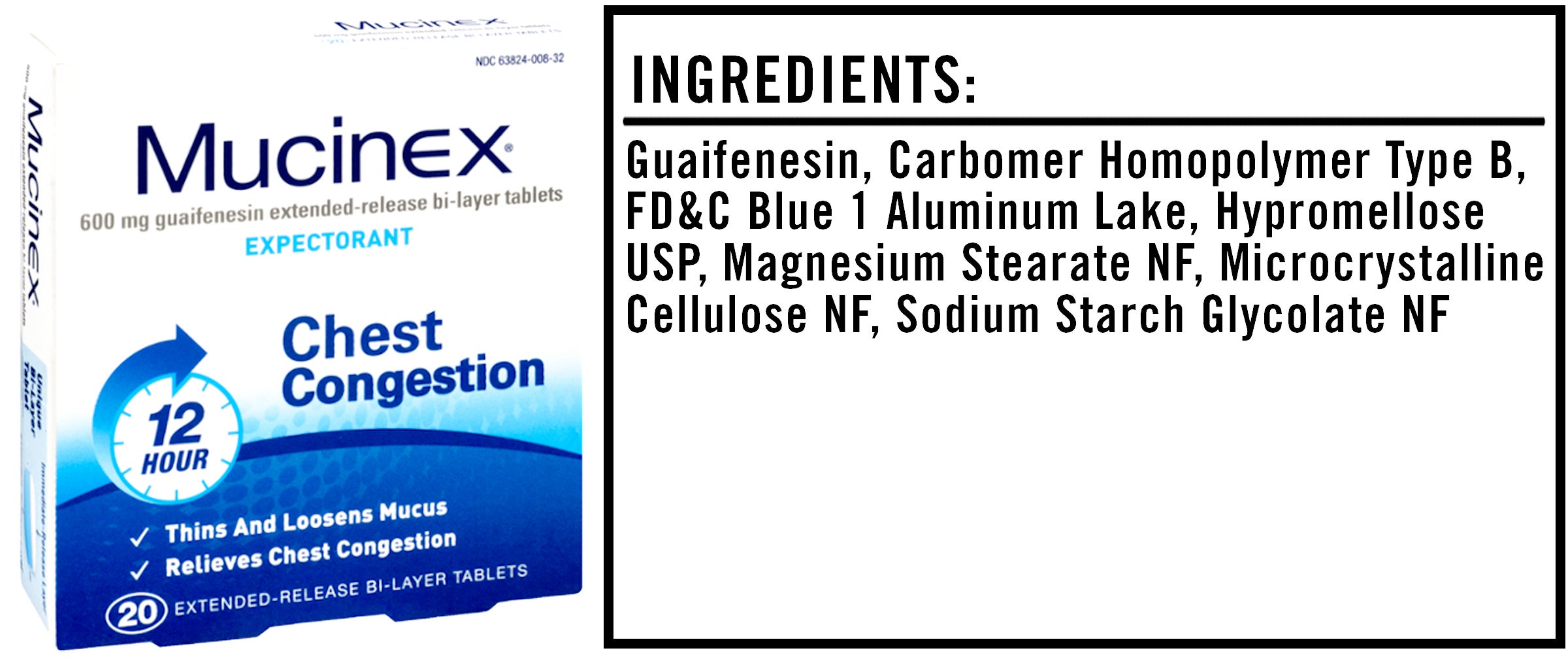We’re often told that you should never eat anything (or put anything on your body) if you don’t recognize everything on the ingredients list. But since most of us have no idea what xanthan gum or potassium benzoate are — or more importantly, what they’re doing to our bodies — we’re decoding the ingredients in the many things Americans put in (and on, or near) themselves.
This edition: Mucinex, which is made from seven separate ingredients that we’ve broken down in the exact order they appear online.

The Ingredients
1) Guaifenesin: The only active ingredient in Mucinex, guaifenesin is derived from a plant called guaiacum and works as an expectorant, helping loosen mucus so you can cough it up and hock some gnarly loogies, dude. It does this by drawing water into the bronchi — the air passages that branch into your lungs — which thins mucus and lubricates the airway, encouraging the removal of said mucus from the chest by coughing (because a cough is one symptom of the coronavirus, some health experts suggest Mucinex for those with mild variations). By encouraging the thinning of mucus, guaifenesin can sometimes help reduce sinus pressure and headaches, too.
2) Carbomer Homopolymer Type B: An inactive white powder, carbomer homopolymer type B works as an excipient, helping form the tablet that delivers the guaifenesin into your system.
3) FD&C Blue 1 Aluminum Lake: Artificial colors like this one are commonly considered to be carcinogenic. That said, physician and biochemist Cate Shanahan, author of Deep Nutrition: Why Your Genes Need Traditional Food, told me during my analysis of Doritos that studies arguing this are a bit flawed, since the amounts they use in these experiments are far more than what we actually find in our foods and pills.
Interestingly, as I discussed in my exploration of the ingredients in antidepressants, blue might not be a random choice, either. Patients tend to respond to the color of their medications, making assumptions about how they work, and how well they work, based on the color. And in this case, when you consider that the color blue can provoke a sense of calm and ease, a studied and proven phenomenon, it makes sense that manufacturers would choose that color for a pill that people generally take when they already feel like crap. (In fact, this is why many medications are blue.)
4) Hypromellose USP: This is often used as a coating agent to control how quickly drugs in tablet form are released within the body. USP stands for United States Pharmacopeia, a nonprofit that essentially develops standards for medicines.
5) Magnesium Stearate NF: Magnesium stearate is a fine white powder frequently used as a release agent, meaning it prevents the various individual ingredients in these tablets from sticking to each other (and the machines) during production. NF stands for National Formulary, which, similar to the United States Pharmacopeia, contains a list of medicines that are approved for prescription throughout the country.
6) Microcrystalline Cellulose NF: This is refined wood pulp, which makes up the bulk of these tablets.
7) Sodium Starch Glycolate NF: Sodium starch glycolate quickly absorbs water, which helps these tablets disintegrate quickly in your stomach.
The Takeaway
Mucinex is a no-frills medication that should help you cough up any pesky mucus lodged in your chest area, which in turn should help you breathe easier. But as with any medication, if your illness is only getting worse or you take a cocktail of other pills, too, consult your doctor before adding Mucinex to the mix.

